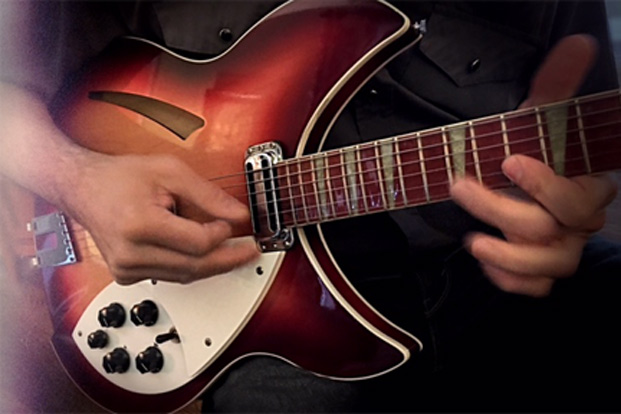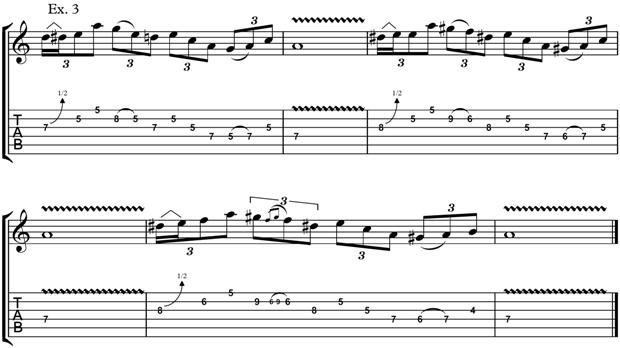Tired of the Same Blues Licks? Spice It Up with Some Eastern Fusion, Part 1

Tired of the same old blues licks in the pentatonic scale? In this series of lessons, I will try to broaden your horizons by introducing you to some elements from "exotic" territories like Middle Eastern, East European and Far Eastern music.
Is it D# or Eb?
As you might know, the minor blues scale has that unique note that distinguishes it from the pentatonic scale (the augmented 4th or diminished 5th).
In A minor blues, for example, it’s Eb or D# (They are enharmonic tones, same pitch, different names).
But when should we call it the first or the latter—and what’s the difference? Well, there are a few answers. One of them relates to their different functionality: While Eb can be an alternative to the 5th (E) by flattening it, D# can function as a leading-tone to the 5th.

In the first phrase (bars 1-2), I used Eb, which replaces E in a pull-off descending effect of a blue note (a well-known musical sigh). In the second phrase (bars 3-4), I used D# as a stepping stone toward E, which emphasizes the 5th in the Am chord. While these are still bluesy, the third phrase (bars 5-6) has a bit more spice and sounds more exotic by using D# with an augmented 2nd interval (C-D#). By adding B from the natural minor scale and drizzling some "HP sauce" on top of them (HP = hammer-on, pull-off), we're starting to get somewhere else.
If this is not enough, you can enrich the last phrase by adding more outsider notes like G# (taken from the harmonic minor scale). While the first phrase in EXAMPLE2 still keeps some of the blues rhythm, the last phrase is a lively take on that idea and has a Balkan feel:

Hungarian Blues
When taking this idea a few steps further, we can end up with some very interesting results. For instance, we can use a playful scale known as the "Hungarian minor" or "double harmonic minor" (Every "Eastern" scale has at least three different names) and treat it as if it were an altered blues scale. If you play this scale as is—A B C D# E F G#—naturally you get the East European flavors. But if you’ll know how to use these "secret ingredients," you'd be able to transform a simple blues lick into a unique, original phrase. For example:

The first phrase in EXAMPLE 3 (bars 1-2) includes a blues lick, and the next two versions use the same contour but with "Hungarian" alterations. In both, the notes A, C and E keep the Am chord triad; D and G are a half step higher; and the two additional notes—B and F—spice it up with some extra seasoning. It would be great to hear your take on this. You can use the following backing track and reply with your own licks.
Udi Glaser is a guitarist, guitar teacher, composer, producer and journalist. He has been playing all types of guitars and styles for more than 22 years and has been teaching them for more than 10 years. He holds a bachelor's degree in musicology and philosophy and attained a sound-engineering diploma and an Orchestrating Producing for Film and Games certificate, for which he received a scholarship in the name of Jeff Beck. Visit his website and follow his Facebook page or Twitter feed.
Get The Pick Newsletter
All the latest guitar news, interviews, lessons, reviews, deals and more, direct to your inbox!







![Joe Bonamassa [left] wears a deep blue suit and polka-dotted shirt and plays his green refin Strat; the late Irish blues legend Rory Gallagher [right] screams and inflicts some punishment on his heavily worn number one Stratocaster.](https://cdn.mos.cms.futurecdn.net/cw28h7UBcTVfTLs7p7eiLe.jpg)


